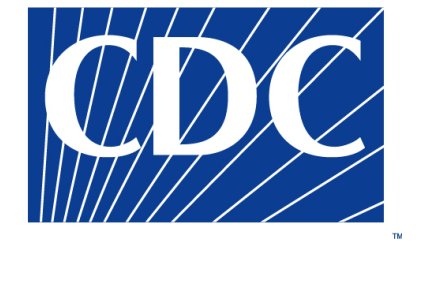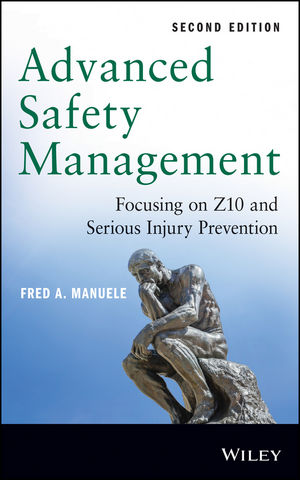 The following statement is from the CDC:
The following statement is from the CDC:
The Centers for Disease Control and Prevention (CDC) has released a report that reviews the early June incident that involved the unintentional exposure of personnel to potentially viable anthrax at the CDC’s Roybal Campus. The report identifies factors found to have contributed to the incident; and highlights actions taken by the agency to address these factors and prevent future incidents. Based on a review of all aspects of the June incident, CDC concluded that while it is not impossible that staff members were exposed to viable B. anthracis, it is extremely unlikely that this occurred. None of the staff who was potentially exposed has become ill with anthrax.
While finalizing this report, CDC leadership was made aware that earlier this year a culture of non-pathogenic avian influenza was unintentionally cross-contaminated at the CDC influenza laboratory with the highly pathogenic H5N1 strain of influenza and shipped to a BSL-3 select-agent laboratory operated by the United States Department of Agriculture (USDA). There were no exposures as a result of that incident. The CDC influenza laboratory is now closed and will not reopen until adequate procedures are put in place. Further investigation, review, and action is underway.
As a result of these two incidents, CDC is issuing, effective immediately, a moratorium on the movement (i.e., transfer inside or outside the agency) of biological materials (i.e., infectious agents, active or inactivated specimens) from BSL3 or BSL-4 facilities. The moratorium will remain in place pending review by an advisory committee.
Based on an internal review called for by the CDC Director, the report released today concludes that the scientists’ failure to follow an approved, written study plan that met all laboratory safety requirements led to dozens of employees being potentially exposed. The report also found that there was a lack of standard operating procedures to document when biological agents are properly inactivated in laboratories as well as a lack of adequate laboratory oversight of scientists performing work in these labs. The report concludes that the critical nature of CDC investigations to detect and respond to naturally occurring and man-made events with select agents while ensuring the safety of staff are paramount and should be guided by the highest standards.
In response to these incidents, CDC has initiated following steps, in addition to the moratorium:
- Established a high-level working group, reporting to the CDC Director, to, among other duties, accelerate improvements in laboratory safety, review and approve, on a laboratory-by-laboratory basis, resumed transfer of biological materials outside of BSL3 and BSL4 laboratories, and serve as the transition group for the single point of accountability on laboratory safety called for in the review of the potential exposure to anthrax incident.
- Begun the process of establishing an external advisory group for laboratory safety. Invitations to participate in this group will be issued by July 18, 2014.
- Initiated an investigation to determine root causes that led to contamination of another avian influenza virus by the H5N1 virus.
- Reported the incident through the proper channels to the select agent oversight body, APHIS.
- Established a review group, under the direction of CDC’s Associate Director for Science, to look at the systems, procedures, and personnel issues leading to this event and means of preventing similar events in the future. This review will be done in conjunction with the internal investigation and in coordination with the working group.
- Undertaking appropriate personnel action expeditiously.
CDC has also implemented or is in the process of implementing the following key recommendations highlighted in the report to address the root causes of the anthrax incident:
- CDC will establish a CDC-wide single point of accountability for laboratory safety.
- The Bioterrorism Rapid Response and Technology (BRRAT) Laboratory will not be conducting work with any select agent until a series of reviews and approvals are completed. BRRAT laboratory scientists do not have access to select agents, which have been placed in storage-only mode. These restrictions will remain in place until changes have been put in place to prevent similar future incidents.
- Appropriate personnel action will be taken with respect to individuals who contributed to or were in a position to prevent this incident.
- All inactivation procedures for laboratories working with select agents and other dangerous pathogens throughout CDC are being carefully reviewed and will be updated as needed.
- CDC will improve its response to future internal incidents by the rapid establishment of an incident command structure, as CDC uses for external events.
- The implications for the use of select agents, including for CDC’s regulatory functions through CDC’s Division of Select Agents and Toxins will be carefully reviewed to incorporate any lessons learned.
The report details the specifics of the June incident. The incident originated when a biosafety level 3 (BSL3) laboratory at CDC prepared B. anthracis samples for use at lower biosafety levels (i.e., BSL 2) in other CDC labs where live bacteria are not required for the research. Preparation of bacteria in this manner is routinely done within the CDC campus; however, in this instance, the lab used a procedure that may not have adequately inactivated the samples. Thus, the potentially infectious samples were moved and used for experimentation by researchers in these lower biosafety level laboratories, who believing the samples were inactivated, were not wearing adequate personal protective equipment while handling the material.
The procedure used by CDC to deactivate the bacteria in this incident had been examined previously for effectiveness. Two laboratories, one at CDC and the other at the Michigan Department of Community Health, conducted experiments to determine the effectiveness of the formic acid/acetonitrile protein extraction procedure for inactivating B. anthracis. Both laboratories found that the extraction procedure completely inactivated preparations of B. anthracis cells after 10 minutes. However, these CDC experiments using B. anthracis spores showed that a very small number of spores remained viable, even after 24 hours of treatment with the extraction chemicals. This result is not unexpected as bacterial spores are typically much more resistant to chemical inactivation than bacterial cells. After the incident was recognized, environmental testing for B. anthracis was done in the three CDC BSL-2 laboratories that had received specimens from the BSL-3 laboratory to determine if any of the bacteria had been disseminated more broadly. No evidence of environmental contamination was found.
Although a sterility check done by the BSL-3 lab showed that the anthrax preparation had not been inactivated after a 10-minute extraction, the preparation had been extracted for 24 hours before transfer to the BSL-2 labs. At that point, all or the great majority of B. anthracis cells and spores would have been inactivated.
CDC is committed to ensuring that people feel safe and are safe in the workplace and the community as employees conduct life-saving laboratory work.
iSelect agents are biological agents and toxins that HHS and USDA have determined have the potential to pose a severe threat to public health and/or animal health, or to plant health; or to agricultural animal or plant products.
Timeline for Anthrax laboratory incident
Timeline for Influenza H5N1 laboratory incident


